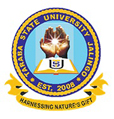Development of the Catholic Priesthood in Tivland up to 2013
Eneji Joseph Eneji
Institute of Humanities (IOH)
Pan-Atlantic University, Lagos
Email: jeneji@pau.edu.ng
Abstract
This study examines the development and impact of the Catholic priesthood in Tivland, Nigeria, focusing on the historical evolution, cultural constraints, and indigenization of the priesthood. Despite cultural challenges, the Catholic Church has thrived in Tivland, with three dioceses and an increasing number of priests being ordained annually. The study aims to do this in four parts: the first part will explore the cultural constraints faced by the Catholic priesthood in Tivland. The second part will identify factors responsible for the indigenization of the priesthood. Part three seeks to investigate how cultural constraints were overcome. Lastly, the fourth part is an analysis of the impact of the Catholic priesthood on Tiv society. Using thematic analysis of primary and secondary sources, the study argues that the indigenization of the Catholic priesthood has had a significant impact on Tiv society, making it a crucial institution in the Catholic Church’s mission field. The findings will contribute to scholarship on the impact of Catholicism in Tivland.
Keywords: Catholicism, Tivland, Priesthood, Indigenization, Cultural Constraints
Introduction
Several attempts were made by some religious orders and missionary societies from Europe precisely the Iberian Peninsula to establish the Catholic faith in Nigeria since the fifteenth century with varying degrees of success. The Portuguese priest of the Diocese of Lisbon made the first attempt during the age of exploration. The King of Lisbon made the first attempt in the conversion of West Africa which was assigned to him through the Papal Bull of Demarcation. Even though the conversion of his territory to the Catholic faith was not the primary aim of the Portuguese expeditions in the fifteenth century, it formed a very special mission dear to the heart of the King.1
The Christian missionaries did not enter Tivland at once; they entered gradually.2 The earliest missionary adventure into Tiv land was undertaken by White missionaries in 1908 who were working in Ibi (in present-day Taraba State). At first, the Tiv never wanted to engage them in anything. This was premised on their encounter with the White colonialist in the area that created suspicion about the motive of the Whiteman. However, their fears were laid to rest when one of the White missionaries at the village of Sai (place of first recorded missionary presence in Tivland) had to explain his mission in the area. Akiga succinctly captures this thus:
Chafa Godi (the White missionary) asked an interpreter in his group to greet the Tiv people and tell them that he was not a tax collector. Rather, he had come as a part of his work to look at Tivland. Afterwards, he would return and tell other Whitemen about his trip and where would be a good place to settle in order to speak the word of Aôndo, God.3 In the over a hundred years since the advent of Roman Catholicism in Tivland, there has been transformation and growth in the area in remarkable ways. The advent of Roman Catholicism in Tivland dates back to 1921 when the first set of missionary priests of the Holy Ghost Fathers registered their presence at Korinya.4 Already Tivland had witnessed the activities of the Sudan United Mission who were the pioneer entrants into the Tiv mission field. Even though the SUM had pioneered the evangelization of the area, their influence was rivaled by the advent of the Catholic missionaries. In terms of strategies for gaining converts, the SUM was interested in adhering to strict Christian doctrines. Whereas
